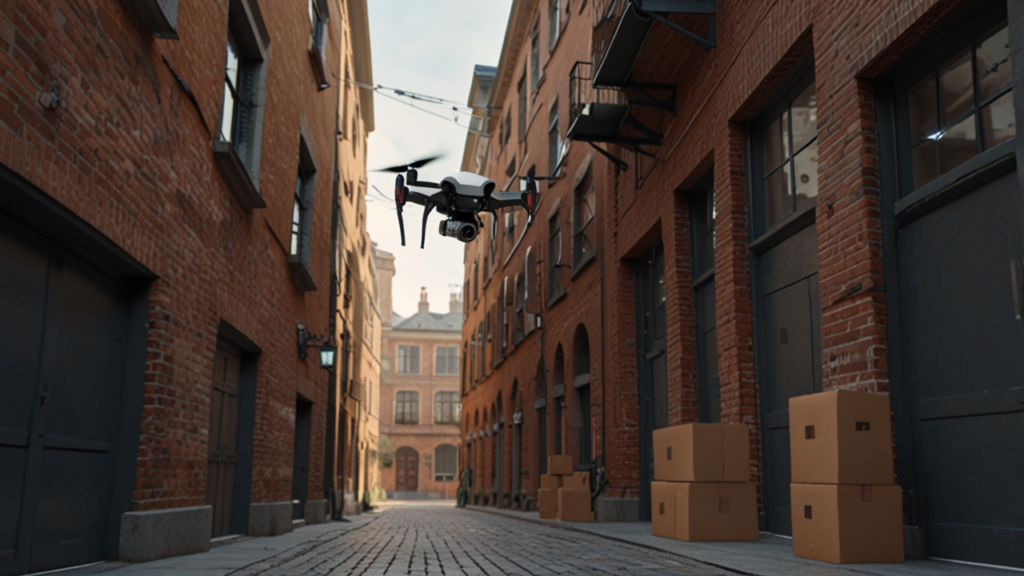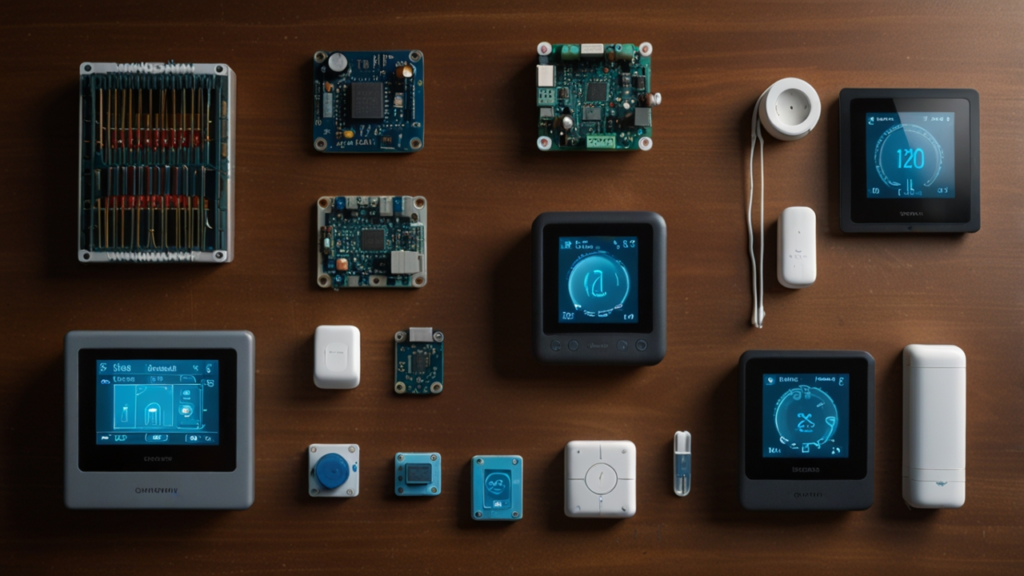Digital Health: 7 Transformative Benefits
The integration of technology with medical care has paved the way for remarkable improvements in the delivery of healthcare. Advances in tools and systems are reshaping how patients receive care and how professionals diagnose, treat, and monitor conditions. In our modern era, change is constant and each innovation brings us a step closer to a more efficient and personalized experience.
Recent developments have accelerated progress by breaking down geographical, physical, and administrative barriers. Innovations are being implemented in ways that connect healthcare providers with patients regardless of location. Readers will find that these transformative benefits are revolutionizing daily practices and long‐term care strategies.
The discussion below takes you through a journey of technological milestones that have influenced modern care delivery, highlighting influential statistics, case studies, and real-world examples. As you explore each section, consider how these enhancements might influence care strategies in your own community.
Table of Contents
- Introduction to Digital Health
- Evolution and History of Digital Health
- How Telemedicine Platforms Enhances Digital Health
- Remote Monitoring Systems and Their Applications
- Real-World Case Studies of Digital Health
- Preventive Analytics in Modern Digital Health Solutions
- Future Trends: Healthcare Transformation and Beyond
Introduction to Digital Health
Fundamental Concepts and Recent Growth Smart Devices
The field has been expanding steadily for years, driven by novel technologies and increased accessibility. Researchers have noted that integration between modern hardware and intelligent systems has created a new era of services. Recently published studies indicate that market valuations have reached significant figures; for example, one report puts the global market valuation at over USD 312.9 billion in 2024
(statista).
Improved digital methods now support streamlined services that enable providers to respond promptly to patient needs. This expansion is fueled by innovations in data processing and patient management systems. Consequently, stakeholders in care delivery are reassessing traditional workflows.
Have you observed the emerging changes in your healthcare environment?
Key Drivers Behind the Rise in Advanced Care
Fundamental drivers include enhanced connectivity, comprehensive patient data, and evolving consumer expectations. Technological breakthroughs create opportunities to reduce administrative burdens and improve service quality. Evidence suggests that remote monitoring through wearable devices and other emerging tools has taken center stage.
Innovative methodologies have further accelerated market expansion, enabling areas previously limited by geography to benefit from expert care. Progressive regulatory reforms have also played an important role, ensuring that payment systems and licensing keep pace with technological advances. Are you intrigued by the potential to see these improvements reflected in everyday care?
For more information on these evolving trends, check out industry insights on Fortune Business Insights.
Evolution and History of Digital Health
Trailblazing Beginnings and Milestone Innovations Wearable Tech
Historically, the field has evolved from the use of basic electronic records to advanced artificial intelligence algorithms. Early attempts at digitization laid the groundwork for today’s dynamic systems. Notably, the COVID-19 pandemic accelerated the adoption of remote practices that had been in development for decades.
Several stages have occurred over time—beginning with paper-based documentation, followed by basic digital diagnostics, and culminating in today’s systems that integrate predictive analytics. Not only did the pandemic catalyze use of technology but it also reduced the gap between care demand and provider availability. Do you remember a time when accessing care felt uncertain?
These historical shifts are essential for understanding current strategies designed to empower both patients and providers.
Historical Data and Transformative Milestones
Reports show that by 2024, the market valued at USD 312.9 billion marked one of the highest growth benchmarks in modern history
research nester.
Furthermore, the evolution of system integration—such as the transition from manual record keeping to automated data integration—has revolutionized care requests and management. Today, providers are continuously monitoring patients outside clinical settings through robust networks. Does this historical perspective change your view on current care practices?
The consequences of past innovations continue to influence regulatory policies and patient expectations in remarkable ways.
How Telemedicine Platforms Enhances Digital Health
Improving Access Through Virtual Care Innovative Solutions
Virtual care services have emerged as a primary driver for expanding care beyond physical locations. Quality tools for remote consultations have significantly reduced the need for in-person visits. These platforms enable video consultations, e-prescriptions, appointment scheduling, and follow-up interactions.
During the COVID-19 outbreak, the rapid implementation of these tools addressed urgent care needs. Many providers reported an increase of around 50% in virtual consultations for mental health services. With regulatory reforms easing reimbursement constraints, providers are increasingly satisfied with the overall benefits offered by these solutions.
Have you tried using virtual consultations for routine check-ups?
Integrating Data and AI for Proactive Care
Advanced algorithms integrate data from multiple sources, such as imaging and lab results. These systems improve diagnostic accuracy while simultaneously reducing errors through the assistance of artificial intelligence. Many systems now use analytical tools to flag early indicators for potential deterioration, prompting timely interventions.
Collaborations with tech companies have led to systems that link patient data across various platforms. As a result, care providers have the ability to personalize treatments based on real-time data. Is it possible that these systems could redefine the future of patient interactions?
For more information on the dynamics of virtual care, refer to insights on telehealth trends at Healthcare Transformers.
Remote Monitoring Systems and Their Applications
Real-Time Monitoring and Proactive Intervention Tech Developments
Advances in monitoring devices have made it possible to track critical physiological metrics in real-time. Monitoring systems now include smartwatches, fitness trackers, and specialized implants that continuously check heart rate, blood sugar, and more. These tools enable early detection and support continuous patient monitoring outside clinical environments.
For acute cases like post-operative care or chronic disease management, these systems have proven to be vital. Early intervention is guided by the constant flow of data that these wearable devices generate, reducing the need for emergency responses. Have you ever wondered how real-time data could affect treatment outcomes?
Such systems are pushing the limits of what home-based care can achieve.
Specific Applications and Notable Outcomes
Detailed analyses of case studies indicate that remote evaluation of imaging has achieved high accuracy levels. A comprehensive review of over 1,000 studies confirmed that remote imaging had moderate to high reliability compared with traditional methods
Pharmiweb.
Furthermore, mobile applications for managing chronic conditions such as diabetes offer patients a way to record blood sugar levels, food intake, and medication schedules. These applications further improve adherence and engagement, reducing readmission rates. Could this data-driven care reshape traditional treatment routines?
With such measurable success, you might consider how these outcomes can enhance everyday care solutions.
Real-World Case Studies of Digital Health
Success in Remote Patient Imaging and Diagnosis Digital Transformation
A rigorous analysis encompassing 1,095 studies revealed that remote patient imaging is reliable for diagnosing numerous conditions. The study demonstrated that imaging evaluated remotely could match or sometimes surpass the reliability of traditional in-person assessments. This has paved the way for significant improvements in follow-up care routines.
For example, remote imaging has been used to manage chronic conditions and postoperative evaluations. The capability to diagnose with confidence remotely highlights the impact on both access and cost-efficiency. Have you ever wondered how such case studies could be replicated in your community?
This evidence supports real-world implementation that continues to be refined and expanded.
Diabetes Management and Chatbot-Assisted Support
Case studies have shown that mobile applications for diabetes management improve patient engagement and reduce hospitalization rates. Patients using these apps report better control over their blood glucose levels and overall disease management. Additionally, integrations with AI-powered chatbots have supplemented therapy by providing accurate, instant support for queries related to chronic conditions.
One notable example is the ISA chatbot developed by a pharmaceutical firm in partnership with a technology innovator. This solution, designed specifically for respiratory conditions, has proven effective as a supplementary tool for patient education and adherence. Does this success prompt you to explore similar solutions within your own care settings?
To further explore these innovations, you might also visit IBMix for detailed analyses of emerging trends.
Comprehensive Comparison of Case Studies
| Example | Inspiration | Impact/Outcome | Region |
|---|---|---|---|
| Remote Imaging | Advanced Sensors | High diagnostic reliability | Global |
| Diabetes App | User Feedback | Improved medication adherence | North America |
| Chatbot ISA | Generative AI | Enhanced patient support | Europe |
| Wearable Devices | Fitness Trackers | Continuous monitoring | Asia |
| Mobile Imaging | Portable Tech | Timely evaluations | Global |
Do these outcomes inspire you to think about the potential of advanced care strategies in new contexts? What successful case could be implemented in your local healthcare system?
Preventive Analytics in Modern Digital Health Solutions
Data-Driven Insights and Early Risk Detection
Analyzing comprehensive data streams enables care providers to predict future health issues. Advanced analytics can scrutinize patterns in vital signs, laboratory results, and imaging data to predict deteriorations. Such methodologies have been linked with significant reductions in avoidable hospitalization rates.
Studies have shown a potential compound effect where early risk detection, combined with immediate intervention, improves outcomes significantly. The intelligence derived from these systems supports proactive decision-making by healthcare professionals, fostering a proactive rather than reactive model of care. Are you excited by the possibility of predicting adverse events before they occur?
This information is gathered from generally accepted methodologies used in modern analytics frameworks.
Implementation and Success Metrics
Case studies have revealed that patient engagement improves when interventions are driven by concrete data insights. Success metrics across various demographics confirm that predictive analytics are critical in reducing healthcare costs and enhancing quality outcomes. Early intervention based on real-time data has been a game-changer in chronic condition management.
Integration of feedback loops has improved ongoing adjustments in treatment protocols and personalized care plans. With better communication channels and enhanced interoperability between monitoring devices and clinical systems, care providers can refine their strategies continuously. Could this approach be the key element missing in your current healthcare strategy?
This approach is supported by findings from a range of documented research and industry reports.
Future Trends: Healthcare Transformation and Beyond
Emerging Innovations and Their Forecasted Impact
Looking ahead, further advancements are expected with the integration of artificial intelligence and scalable cloud-based solutions. Forecasts suggest that by 2030, the rapid growth of virtual and data-driven strategies will lead to explosive market expansion. Early projections indicate that the overall market might reach astronomical figures, driven by increased adoption of emerging technologies.
New AI agents and more intuitive user interfaces are already on the horizon, promising even better alignment of patient needs with available care options. Researchers note that improved interoperability among organizations will further drive value. Do you anticipate that these innovations will eventually redefine the future of care entirely?
This evolution is based on analyses provided by industry leaders and expert panels.
Policy Reforms and Global Integration
Future advancements will not occur in isolation; supportive policy reforms play a critical role. Governments are expected to reduce licensing barriers and expand regulatory support which in turn accelerates the adoption of new systems. Global markets are integrating these visions into cohesive strategies that drive both efficiency and cost savings.
New collaborative initiatives between private and public sectors are expected to further streamline implementation. As a result, even remote regions may soon enjoy the enhanced care infrastructure previously limited to urban areas. Will you embrace these changes as they spread globally?
Industry thought-leaders suggest that these policy shifts, along with technology adoption, are transforming overall care strategies worldwide.
Essential Insights from Digital Health Journey
This section provides a reflective summary of emerging trends and breakthrough initiatives shaping next-generation care. Over recent years, transformative approaches have reshaped traditional practices, creating routes that allow for real-time assessments and proactive interventions. Innovations in connectivity and data integration have given rise to smarter ways to address everyday challenges without unnecessary delays or interruptions in service quality.
Across various sectors, continuous improvements are observed as systems evolve from basic operational models to those driven by predictive intelligence. This rapid evolution is underpinned by a relentless pursuit of efficiency and enhanced patient care. Pioneering institutions have set high standards in delivering measurable outcomes, thus inspiring further investments in technology-driven support mechanisms.
The journey is marked by robust debates on the balance between efficiency and privacy, as well as persistent efforts to bridge the gap between urban and rural access. Approaches have shifted toward sustainable models that focus on prevention and early intervention rather than reactive treatment approaches. Creative problem-solving and adaptive strategies now lead players to explore new paradigms in service delivery.
These developments encourage stakeholders to continuously redefine benchmarks for success. The narrative is one of resilience, innovation, and the constant pursuit of improvement. As these invaluable lessons accumulate, they offer a blueprint for building a brighter future—one that rewards proactive planning and encourages creative solutions. Embrace the potential that emerges at the intersection of ingenuity and perseverance.
FAQ
What is the central role of technology in modern healthcare?
Technology connects patients and providers through advanced systems that enable remote consultations, data-driven decision-making, and enhanced diagnostic precision. This approach improves the overall accessibility and efficiency of care delivery.
How has the COVID-19 pandemic influenced remote care?
The pandemic accelerated the adoption of remote services by forcing providers to quickly implement virtual consultations and data management solutions. This rapid transition has permanently reshaped care practices.
Why is early risk detection important?
Early risk detection allows for timely interventions which can prevent complications and reduce healthcare costs. Data-driven insights alert providers to potential problems before they evolve into serious conditions.
How are policy reforms shaping future healthcare delivery?
Policy reforms help streamline licensing, expand reimbursement frameworks, and support faster integration of technological innovations. These changes are critical to realizing the full potential of emerging solutions.
What benefits do case studies provide to the healthcare industry?
Case studies showcase real-world applications and measurable outcomes that help validate innovative solutions and inspire further advancements. They serve as tangible proof of the value delivered by these technologies.
Conclusion
In summary, the transformative benefits discussed offer a glimpse into a future where efficiencies are maximized and care is consistently tailored to individual needs. The journey from basic record-keeping to intelligent, interconnected systems has radically altered the landscape of modern care.
The changes outlined encourage each one of us to reflect on how these innovations might improve our own experiences and support communities. The integration of advanced systems has not only opened doors to better outcomes but has also redefined what is possible in timely, personalized service delivery.
Your feedback and experiences are important. If you have encountered similar advancements or have thoughts to share, please leave a comment. For more information on how these innovations could impact your life, feel free to explore additional insights and resources available online. To discuss further, Contact us.



